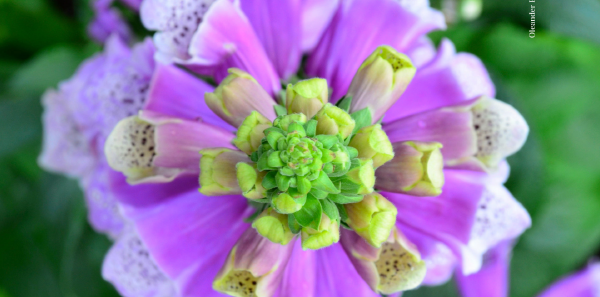
Explore This Issue
ACEP Now: Vol 36 – No 06 – June 2017Toxins/Compound

Photo: shutterstock.com
Foxglove
Digitalis purpurea
Common names: dead man’s bells, fairy cap, fairy finger, lady’s thimble, lion’s mouth, throatwort, witch’s bells
Digitoxin and digoxin are cardiac glycosides that bind to the sodium-potassium-ATPase channel to slow and strengthen the beating of the heart ultimately by increasing vagal tone (decreased conduction through the sinoatrial [SA] and atrioventricular [AV] nodes) and intracellular calcium concentration.
Symptoms
- In overdose, the natural toxin causes nausea, vomiting, weakness, altered mental status, xanthopsia (yellow vision) and seeing halos, cardiac arrhythmias, very slow heart rates, and death.
- Cardioactive glycoside effects on the heart result in a typical pattern called “digeffect.” This consists of a prolonged PR interval, QTc shortening, and a downward slurred ST segment called “Salvador Dali’s moustache.”
- The classic cardiac toxicity seen with cardioactive steroid poisoning (eg, digitoxin and digoxin) is a slow rhythm.
- Almost any rhythm can be seen with this poisoning (atrial fibrillation, atrial flutter, ventricular tachycardia, ectopy, various blocks, and, of course, the classic ventricular bigeminy), except a rhythm quickly transmitted through the AV node. The cardioactive glycosides cause an electrical separation of the atria from the ventricles.
- Definitive therapy for digoxin toxicity (and other closely related cardioactive steroid compounds) is administration of digoxin-specific Fab antibodies.
Facts
There are other poisonous plants that produce cardioactive steroid toxins. These include oleander (Nerium oleander), yellow oleander (Thevetia peruviana), lily of the valley (Convallaria majalis), plants in the squill family (Urginea maritima and Urginea indica), and ouabain (Strophanthus gratus).
Some animals produce cardioactive steroids that can act like digoxin and cause toxicity. There is a digoxin-like poison in some species of fireflies. It is called lucibufagin and is found primarily in the Photinus species. Some toads—cane toad (Rhinella marina) and Colorado river toad (Bufo alvarius)—also produce bufadienolides poisonous to humans. Typically, this occurs from “toad licking” or attempts to use dried secretions incorrectly as a sexual enhancer.
William Withering introduced digitalis into the Western apothecary in 1785.
Vincent van Gogh’s yellow period may have been influenced by digitalis therapy, which at the time was thought to control seizures.
Or, it may have been all the absinthe he was drinking.
 Dr. Hack (Oleander Photography) is an emergency physician and medical toxicologist who enjoys taking photographs of beautiful toxic, medicinal, and benign flowers that he stumbles upon or grows in his garden. Contact him at ToxInRI@gmail.com.
Dr. Hack (Oleander Photography) is an emergency physician and medical toxicologist who enjoys taking photographs of beautiful toxic, medicinal, and benign flowers that he stumbles upon or grows in his garden. Contact him at ToxInRI@gmail.com.
Pages: 1 2 | Multi-Page






No Responses to “Foxglove Flower Is Pretty, but Deadly”